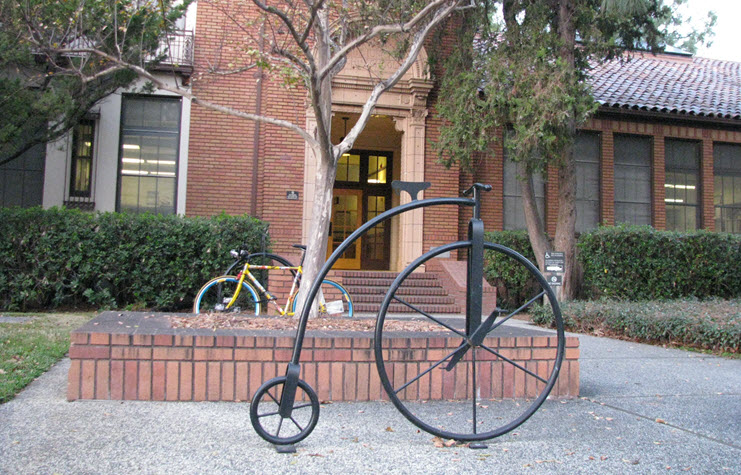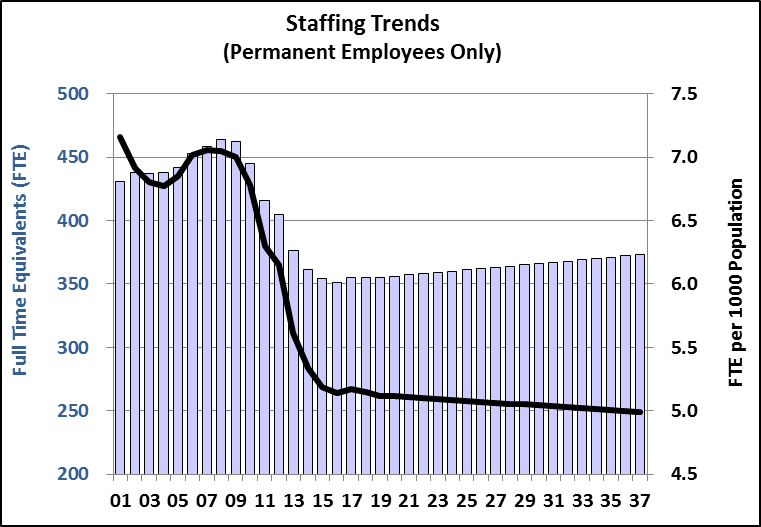 By Robb Davis and Rochelle Swanson
By Robb Davis and Rochelle Swanson
We have spent the past four years together on the City Council working to keep Davis livable, workable, enjoyable, and perhaps most importantly, fiscally resilient. As we reflect on the past four years and look forward to quieter Tuesday evenings, we would be remiss if we did not broach the oft-talked about subject of public employee compensation and the City Council’s lengthy and continued efforts in that arena.
The City is, first and foremost, a service-driven organization. Put another way, people are required to do much of the work. The City currently employs the equivalent of 356 regular, benefited full-time positions. These people provide police, emergency dispatch, initial medical and fire responses; maintain our extensive parks and greenbelt system; keep water flowing through pipes and wastewater treated. Staffing also includes the people who manage our recreation facilities, building inspectors, planners, those who deal with open space, the arts, and much more. Local government deals with many of the things that affect you on a daily basis!
In response to the Great Recession, the City has decreased the number of employees to the levels in the mid-1990s. Understanding that it may not be prudent (or even possible) to simply contract out all essential services or use temporary workers for the majority of our service needs, this City Council has taken to heart the challenge of holding the line on increased employee costs.

Two years ago, we created a long-term financial forecasting model to assist us with projections, employee negotiations, and project planning. This model is helping the Council, employees and the public understand the long-term financial effects of specific costs or potential revenues. It has forced all of us to look at how our decisions today may help or hinder future Councils and residents. The model incorporates realistic assumptions on both sides of the balance sheet.
- It incorporates CalPERS changes, or changes we, and most experts, believe CalPERS is likely to make, such as the decrease to the discount rate and a shortened amortization period. (CalPERS is the statewide public employee retirement system.) These changes have already and will continue to increase the costs passed on to the City of Davis, as well as to all other member agencies.
- The model also includes a 2% annual cost of living adjustment (COLA) for employees, mirroring the average annual inflation rate over the past two decades. By contrast, CalPERS uses a 3% annual COLA when making their projections, implying that, ceteris paribus, our PERS obligations could be lower than projected over time.
In our conversations with employees we have taken head-on the issue of rising benefit costs, namely costs associated with retirement. We have challenged ourselves and employees to look beyond salary increases to total compensation as the best way to understand the true cost of maintaining a quality workforce. We have acknowledged that, based on our actuarial studies, increasing costs related to maintaining the pension system statewide—discount rates and revised life expectancy calculations—will become more challenging to the City and its annual budget over the next 20 years—before costs are projected to stabilize and then subside. Perhaps surprisingly, it’s these “pension maintenance” costs, rather than costs attributed to COLAs, that have the greatest effect on our PERS liabilities. The chart below shows the impact of changes on these pension maintenance costs to the City.

This City Council has been exploring ways that employees can share in the risk of rising pension costs, while maintaining the City’s responsibility as an employer. For over a year, the City Council has been negotiating with labor groups to come to mutually agreeable terms on labor contracts, a responsibility of the City Council and required under state law. This aspirational goal of shared responsibility has been at the forefront of the City’s interests.
We are working to reach agreement on a unique new model—the Employee Compensation Model or ECM—for current contracts that allows for additional cost sharing beyond what is typical in other communities and that is considered separately from annual COLAs. The premise is for employees to share in the cost of pension-related increases that go beyond what the City already expects to pay. If PERS charges to the City were to be higher than originally anticipated, the employee would pay up to a certain percentage of their salary to offset those cost increases. In short, in the event of increased pension costs, the model would call for the employees to “share the pain” by contributing in the form of additional employee pension contributions. However, if the costs from PERS to the City were lower than the City anticipated, the employee could receive up to a certain share of that difference in salary increase.
The shared burden/benefit of this approach would be ongoing, meaning that additional contributions by either side would continue. We believe we are making progress in the development of this unique approach, which is likely the first of its kind in the state. Furthermore, we have changed the conversation with our employees from “salary” to “total compensation.” Perhaps to many this is a minor change, but the shift is fundamental and important. We can now look at the entire package an employee receives and have conversations about both the short-term and the long-term effects of changes, both for the employee and for the City. This is allowing for more holistic conversations with employee groups designed to reach better overall agreements.
We have a professional and highly competent City workforce carrying out duties in a city culture that demands prompt, high quality service. Over time a great variety of functions have been outsourced to contractors as a means to contain costs, and other efficiencies have been found. This has permitted us to maintain high levels of service with a much lower per capita staffing profile than in the past. The staff that remains will continue to provide high quality critical services and we are finding, with them, a modus operandi to assure fiscal resilience in the coming years of challenge, occasioned by increased pension costs.
Robb Davis is the Mayor of Davis; Rochelle Swanson is a two-term Davis City Councilmember. Neither is running for reelection on Tuesday and will leave office at the end of June.





How convenient and frankly disingenuous.
CalPERS has adjusted its discount rate only because CalPERS has always over estimated its returns… as a way to help its public sector union clients from having to spill the beans to local taxpayers that the bill for all these million-dollar life-time paid vacations for union members beginning in their mid-late 50s should be, and will need to be, a LOT bigger than it is today.
The impact of pension costs resulting from pay increases are a huge additional cost to the city and ultimately the taxpayers.
I am through stepping on eggshells about this. I have no animus toward my neighbors for their luck picking a career in CA state government and getting a fat pension and 100% of their healthcare taking care of in retirement that started at age 56 and 58. And my other friends doing the same in another state retired from their federal job. My ire is directed at the politicians that continue to either politically/financially benefit from their connection to the public sector unions, or they tiptoe around the absurdity of the continued compensation practices nibbling around the edges of the required changes to claim that they are doing something.
All city pensions need to have their benefits frozen at current compensation rates and any additional retirement benefits need to roll into a defined contribution plan that ALL new city employees should only get. City employees need to contribute much more to their healthcare costs to supplement the cost of healthcare retirement benefits.
It is time to stop this absurdity. There is no way to justify this ongoing practice given the complete lack of fiscal viability and the obvious trends that will require the city to keep taxing the non-government employee residents that have to fund ALL of their retirement and healthcare themselves except for the pittance they get from Social Security.
Not a criticism, but when did you ever even begin to “step on eggshells”? 🙂
For once I’m in full agreement
Ostrich eggs… they are very sturdy.
Until non government employees have the power to force changes there is no way that the people that make the decisions are going to make big cuts to their OWN pensions.
Over Memorial Day we stopped at a (modest) lakefront home with a (shared) pier that was owned by a friend of a friend who retired at 50 from one fire department (with a six figure) pension who is now fire chief of another department (in another pension system) and he will retire “again” at 65 (or maybe earlier) with a second (six figure) pension.
I know all government employees don’t do as well as the public safety guys (and gals) with the 3%/year “retire” at 50 with 90% of your pay, but unless the unions find a way to put more cash in to CalPERS (and STRS) it is going to get ugly as retired people doing real well try and take more in taxes from the working poor in the state.
http://www.pensiontsunami.com/
You just had to reiterate a falsehood to reiterate your “point”… I tell you three times… government employee is not = union member (as in an organized, dues paying entity). Worked in government service for over 35 years, never belonged to a “union”… never paid mandatory “agency fees”…